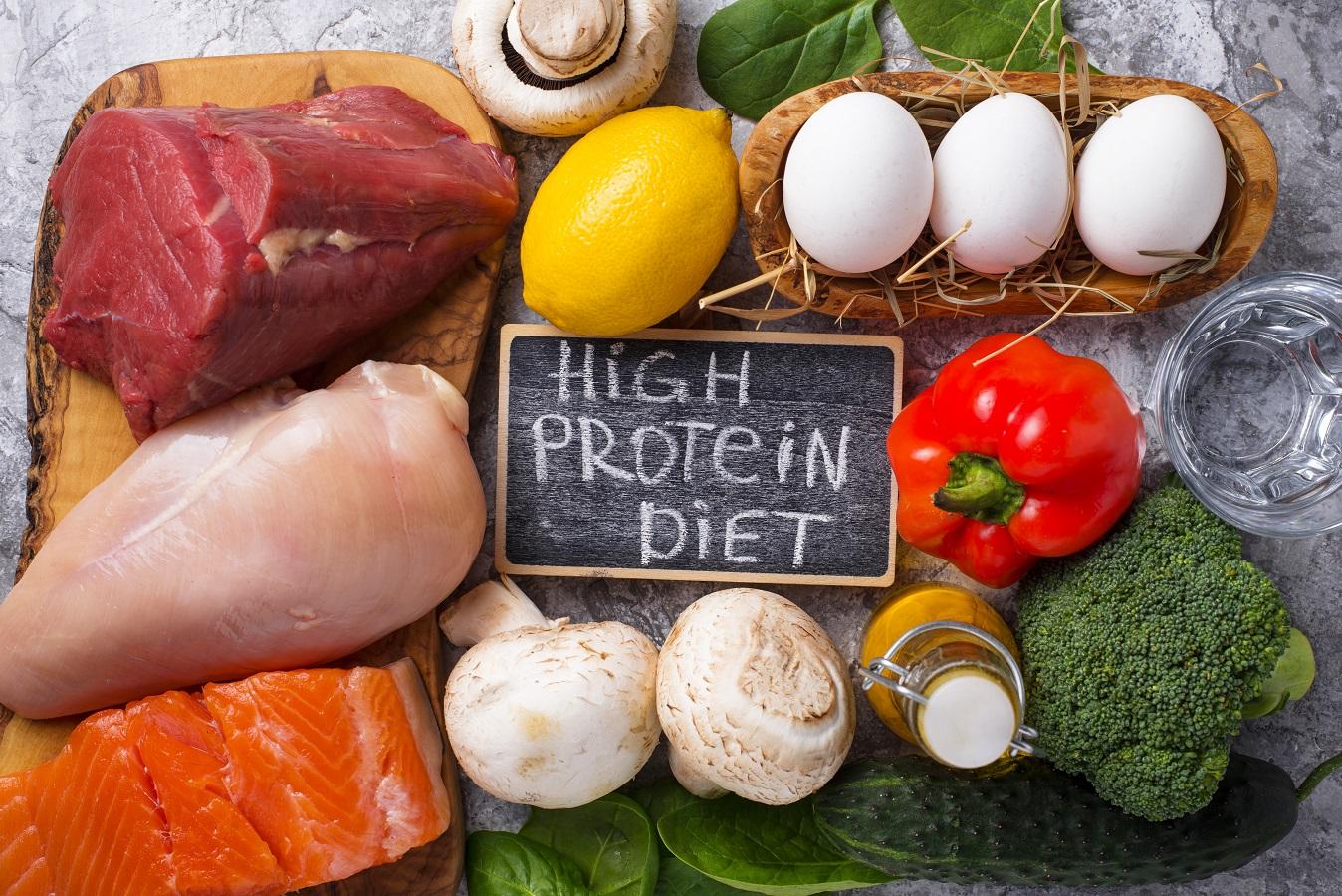In the pursuit of optimal health and fitness, the high-protein diet has emerged as a pivotal strategy for those aiming to build muscle and lose weight. As the cornerstone of muscle repair and growth, protein plays a crucial role in enhancing physical performance and facilitating weight management. This analytical exploration delves into the mechanisms by which a high-protein diet can be effectively utilized to achieve these dual objectives. By examining the underlying science and practical applications, we aim to provide a comprehensive guide for individuals seeking to harness the full potential of protein in their fitness journey. Through a confident and evidence-based approach, this article will illuminate the pathways to achieving a balanced and sustainable high-protein regimen, tailored to support both muscle development and weight reduction.
Understanding the Science Behind High Protein Diets
The foundation of high protein diets lies in the essential role that proteins play in our bodies. Proteins are made up of amino acids, which are the building blocks for muscles, tissues, and even hormones. When you consume a high protein diet, you’re essentially giving your body the raw materials it needs to repair and grow muscle tissues, especially after strenuous workouts. This is why athletes and bodybuilders often prioritize protein intake to maximize muscle hypertrophy and recovery. Additionally, proteins have a high thermic effect, meaning they require more energy to digest compared to fats and carbohydrates, which can lead to increased calorie burn and aid in weight loss.
- Muscle Repair and Growth: Consuming adequate protein provides the necessary amino acids for muscle repair and growth, crucial after resistance training.
- Satiation and Calorie Control: High protein diets help increase feelings of fullness, reducing overall calorie intake and supporting weight loss efforts.
- Metabolic Boost: The thermic effect of proteins can enhance metabolic rate, contributing to more efficient calorie burning.
Understanding these scientific principles allows individuals to tailor their diet for optimal performance and health outcomes. By strategically incorporating high protein foods like lean meats, legumes, and dairy into your meals, you can leverage these benefits to support your fitness goals. Whether aiming for muscle gain or weight loss, the key is to maintain a balanced approach, ensuring your body receives all necessary nutrients alongside protein.
Optimizing Protein Intake for Maximum Muscle Growth
To truly harness the power of protein for muscle development, it’s crucial to understand both the quality and timing of your intake. High-quality protein sources such as lean meats, fish, eggs, and dairy products are rich in essential amino acids that facilitate muscle repair and growth. Incorporating plant-based proteins like lentils, chickpeas, and quinoa can provide additional benefits such as fiber and phytonutrients. Balance is key, and a diverse range of protein sources ensures you’re covering all your nutritional bases.
Strategic protein consumption is equally important. Consuming protein-rich meals at regular intervals throughout the day can help maintain a positive protein balance, which is vital for muscle synthesis. Aim to distribute your protein intake evenly across meals, perhaps by including a protein source in every meal and snack. For those engaged in rigorous training, a post-workout protein shake can aid in recovery and growth. Remember, while protein is a powerful ally, it’s essential to align your intake with your overall caloric needs and fitness goals to avoid unwanted weight gain.
- Lean Meats: Chicken, turkey, lean beef
- Fish: Salmon, tuna, cod
- Dairy: Greek yogurt, cottage cheese, milk
- Plant-Based: Lentils, chickpeas, quinoa
- Timing: Regular intervals, post-workout shakes

Balancing Macronutrients for Effective Weight Loss
Achieving effective weight loss while building muscle requires a strategic approach to macronutrient balance. A high protein diet plays a pivotal role, not just for muscle synthesis, but also in enhancing metabolic rate and promoting satiety. When structuring your diet, consider the following macronutrient distribution to optimize results:
- Protein: Aim for 25-30% of your daily caloric intake from protein. This supports muscle repair and growth while aiding in fat loss by increasing thermogenesis and reducing hunger.
- Carbohydrates: Allocate around 40-50% of your calories to carbs, focusing on complex sources like whole grains and vegetables. This provides the necessary energy for intense workouts without spiking insulin levels excessively.
- Fats: Keep fats at 20-30% of your diet, prioritizing healthy fats such as avocados, nuts, and olive oil. These fats are crucial for hormone production, which is vital for muscle growth and overall health.
By carefully balancing these macronutrients, you can enhance your body’s ability to burn fat while preserving lean muscle mass. This synergy not only propels you towards your weight loss goals but also ensures sustained muscle growth and improved physical performance.

Incorporating High Protein Foods into Your Daily Routine
Integrating high protein foods into your daily meals doesn’t have to be daunting. By strategically choosing protein-rich foods, you can enhance both muscle building and weight loss effectively. Begin by incorporating lean proteins such as chicken breast, turkey, and fish, which are excellent for maintaining muscle mass and promoting fat loss. For those who prefer plant-based options, lentils, chickpeas, and quinoa are not only high in protein but also provide essential nutrients that support overall health.
Consider these practical tips to seamlessly include more protein in your diet:
- Start your day with a protein-packed breakfast: Opt for Greek yogurt with a handful of nuts or a protein smoothie with spinach and almond milk.
- Snack wisely: Choose protein-rich snacks like boiled eggs, edamame, or cottage cheese to keep you satiated between meals.
- Enhance your meals: Add a scoop of protein powder to soups or sauces, or include tofu or tempeh in your stir-fry dishes.
By making these adjustments, you can effortlessly increase your protein intake, supporting your fitness goals without sacrificing flavor or variety.
